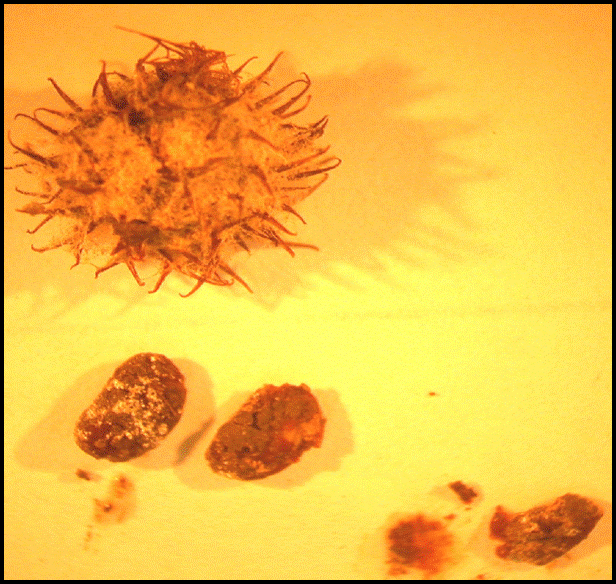Yardwaste mulch applied around trees and shrubs can help conserve water, minimize infection with root rot and if applied thick enough – control weeds. It is usually very cheap or free and the biggest cost is the spreading. Yardwaste is routinely collected from most households and non-residential spaces and everything that ends up there makes a trip to mulching facility. Including weeds. A while ago we looked at survivorship of our most difficult to control weeds over time in the mulch. After grinding the mulch is piled and the piles heat up from the center to the surface. The temperature was a primary factor affecting viability of weeds in those piles, complemented by production organic acids and microbial decomposition of propagules.
We Learned that:
- Only freshly ground yardwaste generates sufficient heat to kill weeds. When we piled mulch that cooled off it did not heat up sufficiently to have any effect on weeds. So if your mulch did not heat due to lack of microbiological activity – you will likely be spreading whatever problems are in it.
- Temperatures that resulted in 100% mortality after 1 day were: 185F (85C) for California burclover, 162F( 72C) for little mallow, 158F (70C) for yellow nutsedge tubers and 156F (69C) for bermudagrass rhizomes. Exposure for more than 1 day was not significantly important.
- Close to 90% of all weed propagules were killed at 149F (65 C) but there were occasional survivors that possibly had extra hard seed coats or enjoyed the ‘cooler' micro-site in non-uniform piles.
- These lethal temperatures existed in the piles at all depths for at least 2 days with exception of the 0-12 inch depth (near surface) which never reached them. It appears important to mix/invert the piles within 2 days from construction to expose weeds surviving near surface to higher temperatures maintained deeper in the pile.
We have also looked at survivorship of several pathogenic fungal structures and insect pests and nematodes in these yardwaste mulch piles and most of them were more sensitive to heat than weeds, with exception of sclerotia of Sclerotinia minor that behaved and looked like weed seed. The weed part of the story has been published in Weed Technology: 21(1):59-65. 2007
doi: http://dx.doi.org/10.1614/WT-05-088.1
Image: California burclover seeds in and out of burs after 1 day at 3 ft depth in fresh yardwaste mulch disintegrate and are colonized by saprophytic fungi.
